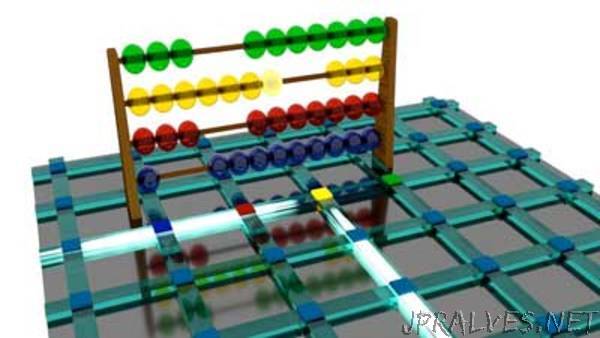
“The quest to develop ever-faster and more powerful computers has led to one of the most rudimentary methods of counting being given a 21st century make-over.
An international team of researchers, including Professor C. David Wright from the University of Exeter, have developed a nanoscale optical ‘abacus’ – which uses light signals to perform arithmetic computations.
The innovative device works by counting pulses of light – much in the same way beads are used to count when using a conventional abacus - before storing the data. This pioneering new technique could pave the way to new, more powerful computers that combine computing and storage functions in one element – a move away from conventional computers that treat these two functions as separate.
The study is published in leading scientific journal, Nature Communications.
Prof. C David Wright, an expert in electronic engineering and co-author of the study said: “This device is able to carry out all the basic functions you’d associate with the traditional abacus – addition, subtraction, multiplication and division – but what’s more it can do this using picosecond (one-thousandth of a billionth of a second) light pulses”.
Lead author of the study, Professor Wolfram Pernice from the Institute of Physics at Münster University in Germany added: “In the article we describe for the first time the realization of an abacus which operates in a purely optical way. Rather than wooden beads as found on traditional abacuses, our innovative device calculates with pulses of light – and simultaneously stores the result.”
The team’s optical abacus, which is so small it’s essentially invisible to the naked eye, is installed on a photonic microchip that can be easily manufactured. So far, the researchers have succeeded in calculating with two-digit numbers using two photonic phase-change cells, but the extension to large multi-digit numbers simply involves the use of more cells.
Co-author Professor Harish Bhaskaran, from the University of Oxford, added: “Computing with light – and not with electrons, as is the case with traditional computers - means that we can develop much faster systems which can be connected using integrated optical waveguides.”
Calculating with light using a chip-scale all-optical abacus is published in Nature Communications on Thursday, November 2 2017. It was funded by the German Research Foundation and the UK’s EPSRC.”
